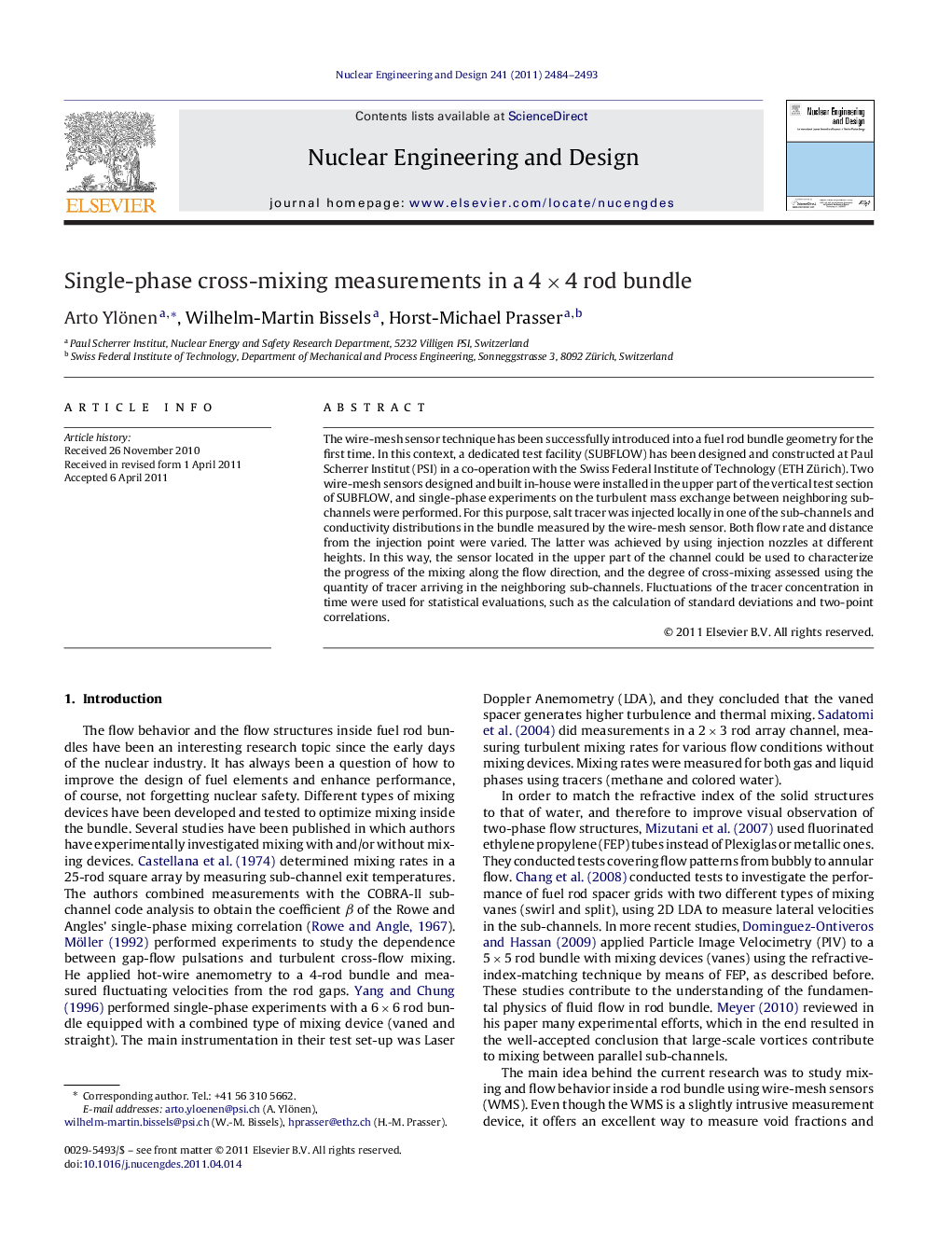| Article ID | Journal | Published Year | Pages | File Type |
|---|---|---|---|---|
| 297549 | Nuclear Engineering and Design | 2011 | 10 Pages |
The wire-mesh sensor technique has been successfully introduced into a fuel rod bundle geometry for the first time. In this context, a dedicated test facility (SUBFLOW) has been designed and constructed at Paul Scherrer Institut (PSI) in a co-operation with the Swiss Federal Institute of Technology (ETH Zürich). Two wire-mesh sensors designed and built in-house were installed in the upper part of the vertical test section of SUBFLOW, and single-phase experiments on the turbulent mass exchange between neighboring sub-channels were performed. For this purpose, salt tracer was injected locally in one of the sub-channels and conductivity distributions in the bundle measured by the wire-mesh sensor. Both flow rate and distance from the injection point were varied. The latter was achieved by using injection nozzles at different heights. In this way, the sensor located in the upper part of the channel could be used to characterize the progress of the mixing along the flow direction, and the degree of cross-mixing assessed using the quantity of tracer arriving in the neighboring sub-channels. Fluctuations of the tracer concentration in time were used for statistical evaluations, such as the calculation of standard deviations and two-point correlations.
► The wire-mesh sensor technique has been successfully introduced into a fuel rod bundle geometry. ► Quantitative information on the turbulent dispersion of the fluid was obtained. ► In full spatial and temporal resolution, the data is interesting for the unsteady CFD validation.
